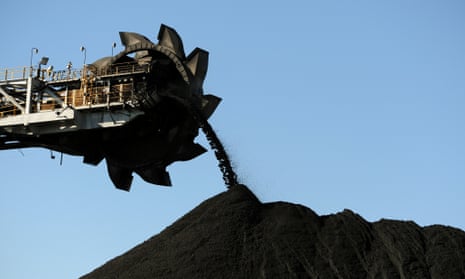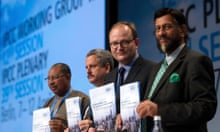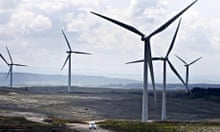Coal will be a predominant energy source for “decades and decades” to come, but with “drastically” reduced greenhouse emissions owing to technological advancement, the environment minister, Greg Hunt, has predicted as he responds to the latest report from the Intergovernmental Panel on Climate Change.
The third report from the IPCC working group said the cheapest and least risky route to dealing with global warming would be to abandon all dirty fossil fuels in coming decades. It said gas – including that from the global fracking boom – could be important during the transition, but only if it replaced coal burning, and included nuclear as a low-carbon option.
It also included carbon capture and storage but noted it was an untested technology on a large scale and may be expensive.
But Hunt said he believed carbon capture and usage would be crucial to Australia’s emissions reductions.
“Coal will be used for decades and decades more … but what I do think will change is the emissions from it and that is the critical thing,” he told Sky news, describing “highly prospective” technology being developed by Csiro.
“What I think will happen is this … we will be able to use coal and gas in a dramatically more efficient way, with dramatically lower emissions … that will happen over the coming decade as we make real progress, including cleaning up our brown coal power stations, with drying gasification and capturing, not for storage … but capture and reuse,” Hunt said.
He nominated the three “great sources” for emission reductions for Australia as “the land sector, energy efficiency and cleaning up power stations.”
The government will release a white paper on its Direct Action plan in the next few weeks. The fund, which has been allocated $300m, $500m and $750m in its first three years and an unspecified amount of money in the fourth and subsequent years, will run competitive tenders for companies and organisations seeking to reduce their emissions.
Hunt said the government’s “broad approach is to work with the world to achieving our emissions reductions” but would not be drawn on longer term reduction targets for Australia and indicated the government would not be increasing Australia’s short-term minimum reduction target of 5% by 2020.
The IPCC report, prepared by more than 1,250 experts from around the world, found that limiting the global temperature increase to 2C above pre-industrial levels would require a tripling or quadrupling of low-carbon energy by 2050.






Comments (…)
Sign in or create your Guardian account to join the discussion